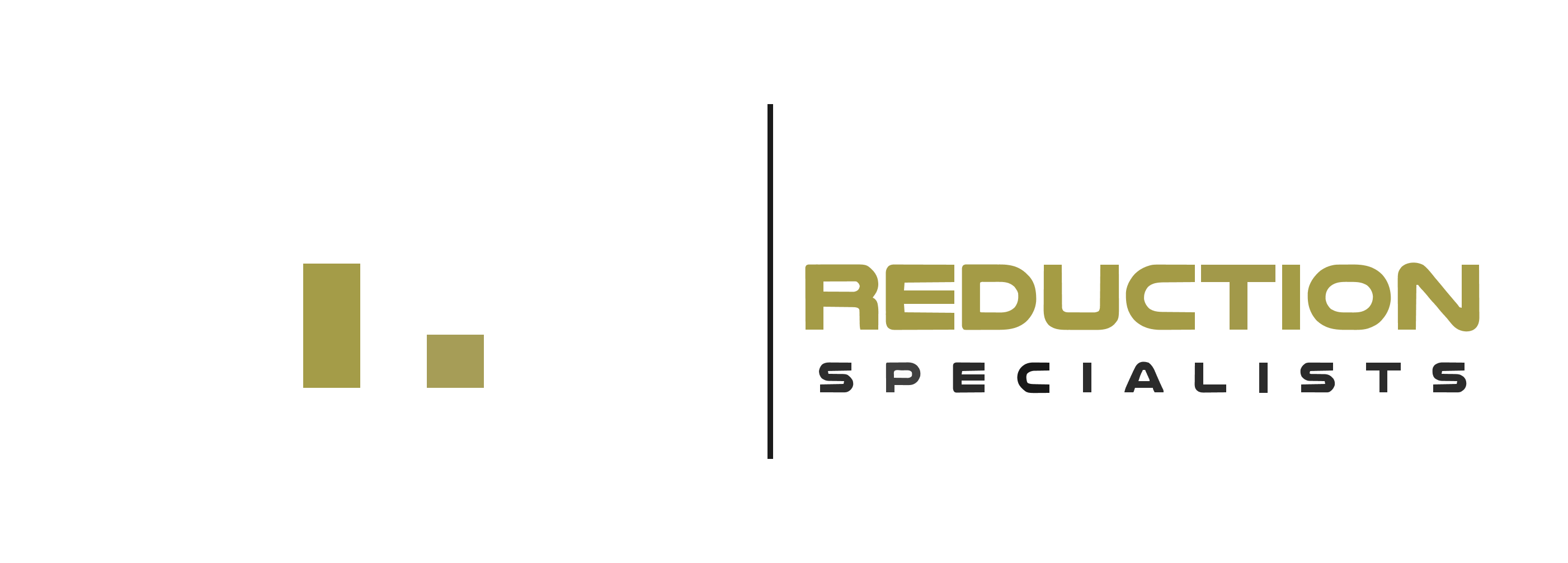Unlock 30% Tax Savings: Your Essential Guide to Renewable Energy Tax Credits
Looking to slash your tax bill while contributing to a greener future? The answer lies in renewable energy tax credits, offering a substantial 30% savings on your investment in eco-friendly home improvements. Thanks to the Inflation Reduction Act, homeowners can now save up to $3,200 annually through various energy-efficient upgrades. Whether you’re considering heat pumps, solar panels, or energy-efficient windows, these federal tax incentives make sustainable living more affordable than ever. But navigating the world of tax credits can be overwhelming. Which improvements qualify? How do you maximize your savings? What documentation do you need? In this comprehensive guide, we’ll break down everything you need to know about renewable energy tax credits. From understanding eligibility criteria to strategic planning for maximum benefits, we’ll help you make informed decisions that benefit both your wallet and the environment. Let’s explore how you can turn your eco-friendly home improvements into significant tax savings.
Key Takeaways:
- – Homeowners can claim up to 30% in tax credits on qualified renewable energy installations and energy-efficient home improvements
- – Annual savings can reach up to $3,200 through various energy-efficient upgrades, including heat pumps, solar panels, and energy-efficient windows
- – The federal tax credit applies to a wide range of renewable energy projects and efficient home improvements, making sustainable living more accessible
- – Tax equity investments and new credit monetization options provide flexible ways to claim these benefits
- – The residential clean energy credit has been extended, offering long-term opportunities for homeowners to invest in sustainable solutions
Understanding Renewable Energy Tax Credits
Renewable energy tax credits are powerful financial incentives designed to make eco-friendly home improvements more affordable. These credits directly reduce your federal tax liability, offering a dollar-for-dollar reduction in what you owe.
How Tax Credits Work
Unlike deductions that lower your taxable income, tax credits subtract directly from your tax bill. For example, if you owe $5,000 in taxes and qualify for a $1,500 renewable energy credit, your final tax bill would be $3,500.
Available Credit Amounts
The Inflation Reduction Act has significantly enhanced these credits, offering up to 30% of the cost for qualifying renewable energy installations. There’s no upper limit on most renewable energy credits, except for fuel cell property which has specific restrictions.
Qualifying Technologies
Several renewable energy technologies qualify for these tax credits:
– Solar panels and water heaters
– Wind energy systems
– Geothermal heat pumps
– Biomass fuel systems
– Battery storage technology
– Fuel cells
Credit Duration and Timeline
These credits are available through 2032 at the 30% rate. After 2032, the credit value will decrease to 26% in 2033 and 22% in 2034, before expiring in 2035 unless Congress extends them further.
Claiming Process
To claim these credits, you’ll need to:
– Keep detailed records of your purchases
– Obtain manufacturer certification statements
– File IRS Form 5695 with your tax return
– Ensure installations meet all required standards
???? Key Takeaway: Renewable energy tax credits offer a 30% reduction in federal taxes for qualifying eco-friendly installations through 2032, making sustainable home improvements significantly more affordable for homeowners.
Residential Clean Energy Credit: Your Path to 30% Savings
The Residential Clean Energy Credit offers homeowners a significant opportunity to save on their taxes while investing in sustainable energy solutions. This federal incentive program provides a direct reduction in your tax liability, making renewable energy installations more affordable than ever.
Understanding the 30% Credit
The credit allows you to claim 30% of the total costs associated with installing qualified clean energy systems in your home. This includes not only the equipment costs but also labor expenses for preparation, assembly, and original installation. The best part? There’s no upper limit on the amount you can claim, making it particularly valuable for larger installations.
For example, if you spend $20,000 on a solar panel system installation, you could receive a $6,000 tax credit. This substantial reduction in your tax liability makes the transition to clean energy significantly more affordable.
Eligible Technologies and Requirements
The credit covers a wide range of renewable energy technologies:
– Solar panels and solar water heaters
– Wind turbines
– Geothermal heat pumps
– Battery storage systems (minimum capacity of 3 kilowatt hours)
– Fuel cell property (limited to $500 per 0.5 kilowatt of capacity)
To qualify, these systems must be installed in your primary or secondary residence within the United States. The equipment must meet specific performance and quality standards, and for solar water heaters, at least half of the energy used to heat water must come from solar energy.
The credit remains at 30% through 2032, then decreases to 26% in 2033 and 22% in 2034. This gradual step-down provides a clear timeline for homeowners planning their renewable energy investments.
???? Key Takeaway: The Residential Clean Energy Credit offers a substantial 30% tax reduction on renewable energy installations through 2032, with no upper limit, making sustainable home improvements more accessible and financially beneficial.
Energy Efficient Home Improvement Credits
The Energy Efficient Home Improvement Credit offers homeowners a fantastic opportunity to save on their taxes while making eco-friendly upgrades. Under the Inflation Reduction Act, you can claim up to 30% of your qualified home improvement costs.
Maximum Annual Credit Limits
The credit allows you to claim up to $3,200 per year on various energy-efficient improvements. Here’s a breakdown of specific limits:
– Heat pumps and biomass stoves: Up to $2,000
– Exterior windows: Maximum $600
– Exterior doors: $250 per door (up to $500 total)
– Home energy audits: Up to $150
– Electrical panel upgrades: Up to $600
– Insulation and air sealing: Up to $1,200
Qualifying Requirements
To be eligible for these credits, your improvements must meet specific energy efficiency standards. The products should be ENERGY STAR certified or meet the requirements set by the International Energy Conservation Code (IECC).
Credit Application Process
Claiming these credits is straightforward. You’ll need to:
– Keep detailed records of your purchases and installations
– Obtain manufacturer certifications for qualified products
– File IRS Form 5695 with your tax return
– Ensure improvements are made to your primary residence
Important Considerations
Remember that these credits are non-refundable, meaning they can only reduce your tax liability to zero. Any unused portion of the credit cannot be refunded. However, you can carry forward excess credits to future tax years.
???? Key Takeaway: The Energy Efficient Home Improvement Credit offers up to 30% tax savings on qualified upgrades, with annual limits of $3,200, helping homeowners make sustainable improvements while reducing their tax burden.
Business Investment Opportunities
The renewable energy sector offers lucrative investment opportunities for businesses looking to maximize their tax benefits while contributing to a sustainable future. Let’s explore how your business can strategically invest in clean energy solutions.
Tax-Advantaged Investment Options
Businesses can take advantage of the Business Energy Investment Tax Credit (ITC), which provides substantial tax savings on renewable energy installations. This credit allows you to deduct up to 30% of the installation costs from your federal taxes. The investment can include solar panels, wind turbines, or geothermal systems for your commercial property.
Strategic Equipment Purchases
When investing in renewable energy equipment, timing is crucial. Making purchases before the tax year ends ensures you can claim credits in the upcoming filing season. Consider investing in:
– Solar panel systems for commercial buildings
– Energy-efficient HVAC systems
– Smart energy management systems
– Battery storage solutions
– Wind energy installations
Long-term Financial Benefits
Beyond immediate tax savings, renewable energy investments offer significant long-term advantages:
– Reduced monthly utility costs
– Increased property value
– Protection against rising energy prices
– Enhanced brand reputation
– Additional state-level incentives
Risk Management Considerations
While investing in renewable energy, it’s essential to:
– Verify equipment meets IRS certification requirements
– Document all purchases and installations thoroughly
– Maintain proper records for tax filing
– Consult with tax professionals for compliance
– Consider insurance coverage for installations
Market Growth Potential
The renewable energy market continues to expand, offering promising returns. With government support and increasing corporate sustainability initiatives, these investments are becoming more valuable. The sector’s growth trajectory suggests early adopters will benefit from both tax advantages and market appreciation.
???? Key Takeaway: Business investments in renewable energy offer a powerful combination of 30% tax credits, long-term cost savings, and sustainable growth opportunities while supporting environmental conservation efforts.
New Credit Transfer Options
The Inflation Reduction Act (IRA) has revolutionized how renewable energy tax credits can be monetized. Gone are the days when complex tax equity partnerships were the only way to benefit from these incentives. Now, there are two groundbreaking options that make these credits more accessible and valuable.
Direct Pay for Tax-Exempt Organizations
Tax-exempt entities like nonprofits, state governments, and tribal organizations can now receive direct payments from the Treasury. This is a game-changer as these organizations previously couldn’t benefit from tax credits due to their tax-exempt status. The payment equals the full value of the credit they would have received if they were taxable entities.
Credit Transfers for Taxable Entities
Businesses can now sell their tax credits to other taxpayers for cash. This creates a win-win situation – sellers get immediate cash flow, while buyers reduce their tax liability. The transfer must be a one-time, cash-only transaction, and the credit can’t be resold to another party.
Market Impact and Pricing
The new transfer options have created a dynamic marketplace for renewable energy credits. Prices typically range from 85-95% of the credit’s face value, depending on factors like:
– Credit type and technology
– Project size and location
– Seller’s track record
– Insurance availability
– Market demand
Documentation Requirements
To ensure compliance, proper documentation is crucial. This includes:
– Written transfer agreements
– Project certification documents
– Proof of credit eligibility
– IRS forms and notifications
– Insurance certificates (if applicable)
???? Key Takeaway: The IRA’s new credit transfer options provide flexible monetization paths for renewable energy tax credits, allowing both tax-exempt and taxable entities to maximize their benefits through direct payments or credit sales.
Claiming Your Tax Credits
Claiming renewable energy tax credits is a straightforward process when you understand the essential steps. Let’s break down how you can successfully claim these valuable incentives.
Required Documentation
Before filing your taxes, gather all necessary paperwork, including receipts, manufacturer certifications, and installation records. Keep detailed records of your renewable energy investments, including purchase dates, costs, and installation completion dates. These documents serve as proof of your qualified expenses.
Filing Process
To claim your renewable energy tax credits, you’ll need to complete IRS Form 5695 (Residential Energy Credits) with your annual tax return. Calculate your credit amount by multiplying your qualified expenses by 30%. Remember to include this form with your regular tax filing to ensure proper processing.
Important Deadlines
Submit your tax credit claims within the same tax year you made the renewable energy investments. If you installed solar panels in 2023, for example, claim the credit when filing your 2023 taxes in 2024. Missing these deadlines could result in losing valuable tax savings.
Professional Assistance
Consider working with a qualified tax professional who specializes in renewable energy credits. They can help maximize your benefits, ensure compliance with IRS requirements, and identify additional state-level incentives you might qualify for.
Common Mistakes to Avoid
Don’t forget to check equipment certifications before purchase, as only qualifying products are eligible for credits. Also, avoid claiming credits for installation costs that aren’t directly related to the renewable energy system, such as structural repairs or cosmetic improvements.
???? Key Takeaway: Successfully claiming renewable energy tax credits requires proper documentation, timely filing using Form 5695, and attention to qualifying criteria – working with a tax professional can help maximize your benefits.
State-Level Incentives and Additional Benefits
Beyond federal tax credits, many states offer additional incentives to encourage renewable energy adoption. These state-level programs can significantly boost your overall savings when combined with federal benefits.
State Tax Credits and Rebates
Several states provide their own tax credits and rebate programs. For instance, California offers the Self-Generation Incentive Program (SGIP), which provides rebates for installing energy storage systems. New York residents can benefit from the NY-Sun program, offering incentives for solar panel installations.
Utility Company Programs
Local utility companies often provide additional savings through various programs. These might include reduced electricity rates, net metering benefits, or cash rebates for installing energy-efficient equipment. Check with your local utility provider to explore available options.
Property Tax Exemptions
Many states offer property tax exemptions for renewable energy installations. This means the added value to your home from solar panels or other green improvements won’t increase your property taxes. Massachusetts, for example, offers a 100% property tax exemption for solar and wind-powered systems.
Sales Tax Benefits
Some states provide sales tax exemptions on renewable energy equipment purchases. This instant savings can reduce your upfront costs significantly. States like Washington and New Jersey offer complete sales tax exemptions on solar energy systems.
???? Key Takeaway: State-level incentives, including tax credits, rebates, and property tax exemptions, can be combined with federal benefits to maximize your savings on renewable energy investments.
Conclusion
Embracing renewable energy isn’t just about environmental stewardship—it’s a smart financial move that can significantly reduce your tax burden. With the Inflation Reduction Act offering a generous 30% tax credit on qualifying improvements, there’s never been a better time to invest in sustainable home upgrades. Remember, whether you’re interested in solar panels, heat pumps, or energy-efficient windows, proper documentation and timing are crucial for maximizing your tax benefits. Take advantage of the annual credit limit of $3,200 by strategically planning your eco-friendly improvements. Consider consulting with a tax professional to ensure you’re optimizing all available incentives. Ready to transform your home while saving money? Start by assessing your energy needs, researching qualified contractors, and gathering the necessary documentation. The path to significant tax savings and a greener future is clear—take the first step today by exploring these renewable energy tax credits. Your wallet and the planet will thank you for making this smart investment in sustainable living.
FAQs
Can I claim renewable energy tax credits if I’m renting my home?
While renters typically can’t claim credits for permanent installations like solar panels, you may be eligible for certain portable renewable energy devices. However, major installations would need to be done by the property owner to qualify for tax credits.
What happens if my tax credit amount exceeds my tax liability?
If your renewable energy tax credit exceeds your tax liability, you can carry forward the unused portion to future tax years. The carryforward period typically extends for up to 20 years, ensuring you maximize your tax benefits.
Are there income limits to qualify for renewable energy tax credits?
There are no specific income limits for most renewable energy tax credits under the Inflation Reduction Act. However, your tax liability must be sufficient to claim the full credit amount unless you opt for direct pay or credit transfer options.
How do state-level renewable energy incentives interact with federal tax credits?
You can typically claim both state and federal renewable energy incentives. State incentives might include additional tax credits, rebates, or grants. However, some state benefits might reduce the cost basis for federal tax credit calculations.
What documentation do I need to maintain for claiming these tax credits?
Keep all receipts, contracts, and certification statements for your renewable energy installations. Also maintain manufacturer certifications, proof of purchase, and installation documentation. These should be kept for at least three years after claiming the credit.
Can I claim the tax credit for a vacation home or secondary residence?
Yes, you can claim renewable energy tax credits for multiple properties, including vacation homes. However, the installation must be at a residence located in the United States, and you must use the property as a residence.




![10 Smart Income Deferral Strategies to Reduce Your Tax Burden [Expert Tips]](https://taxreductionspecialists.com/wp-content/uploads/2024/11/tax-burden-768x604.jpg)


